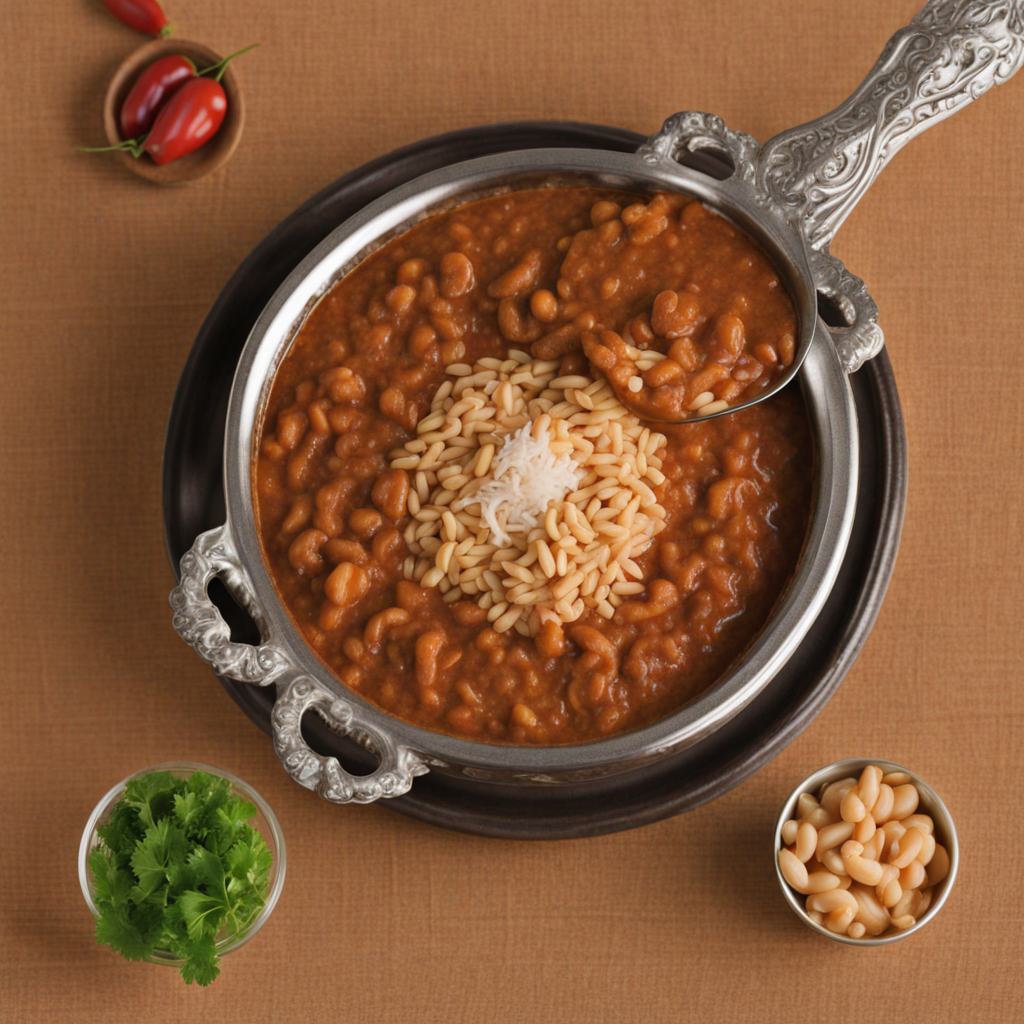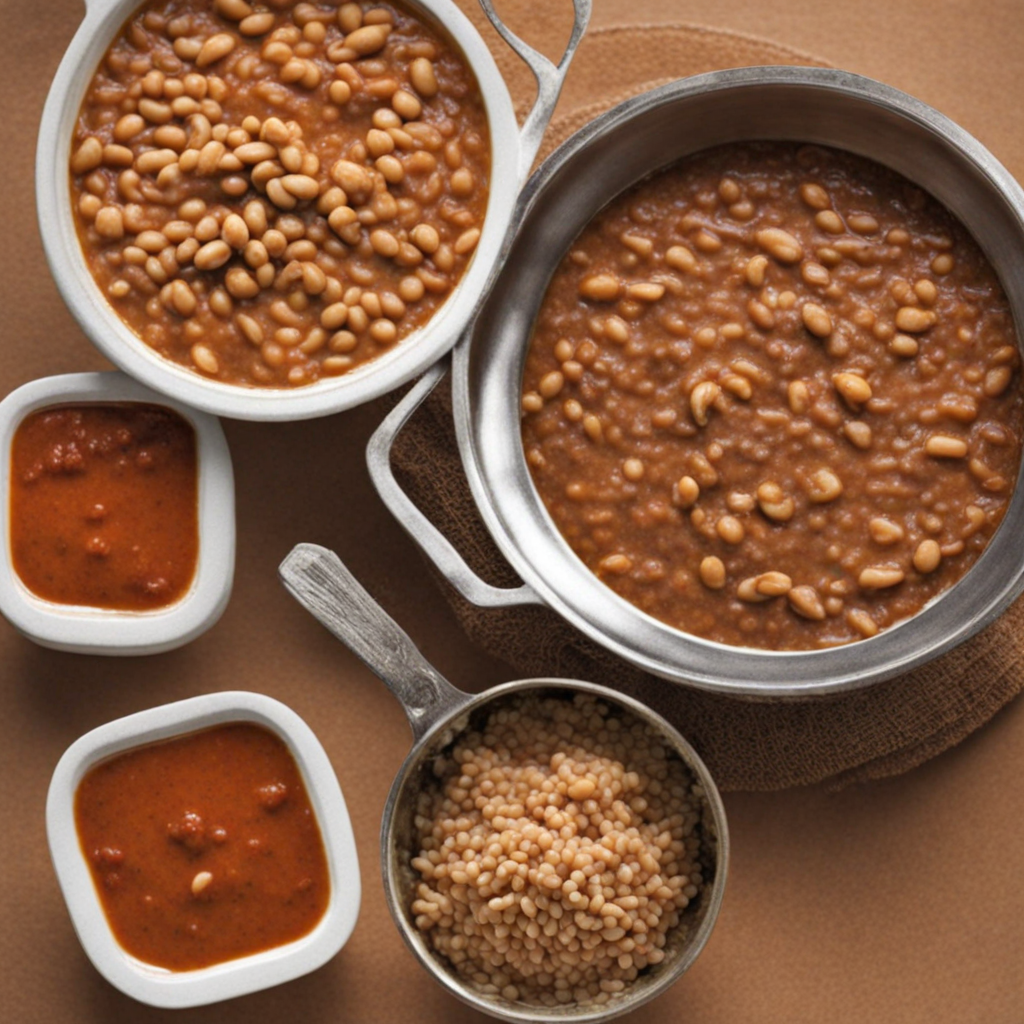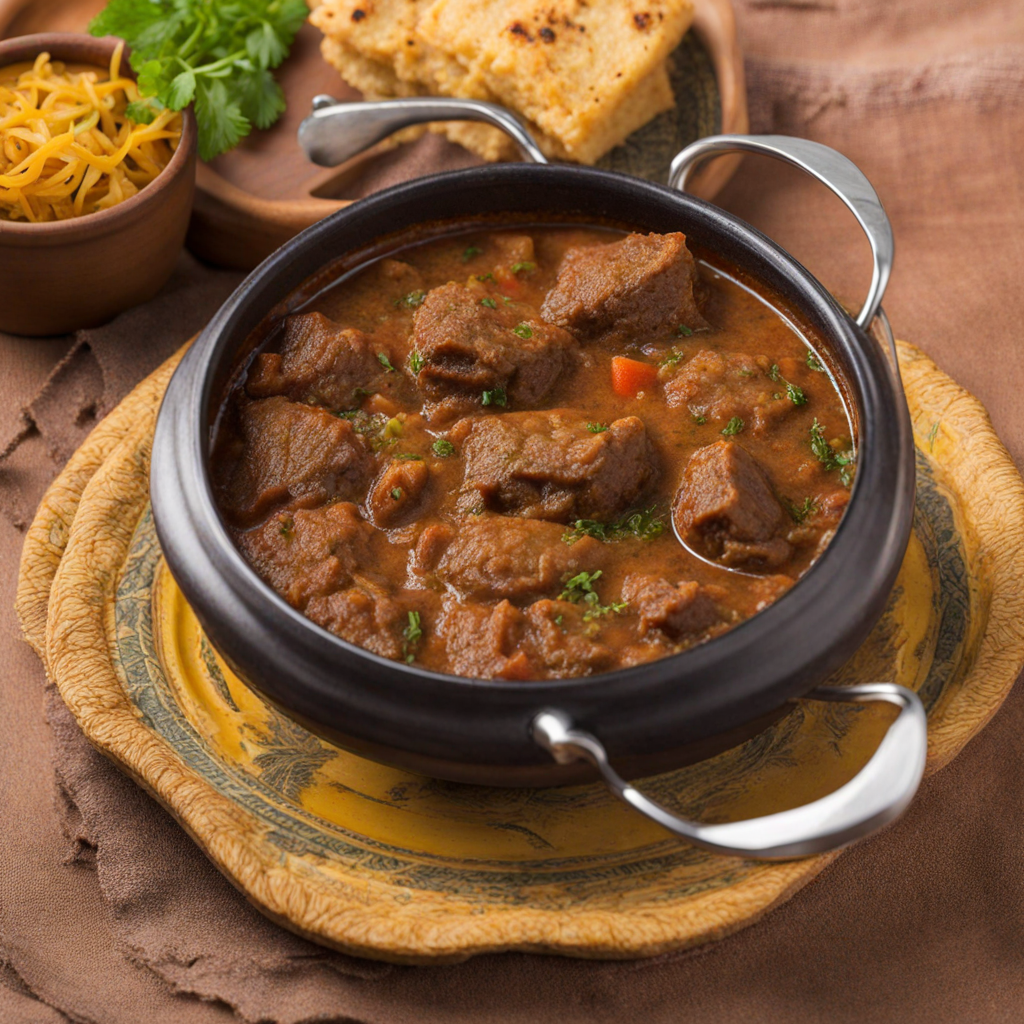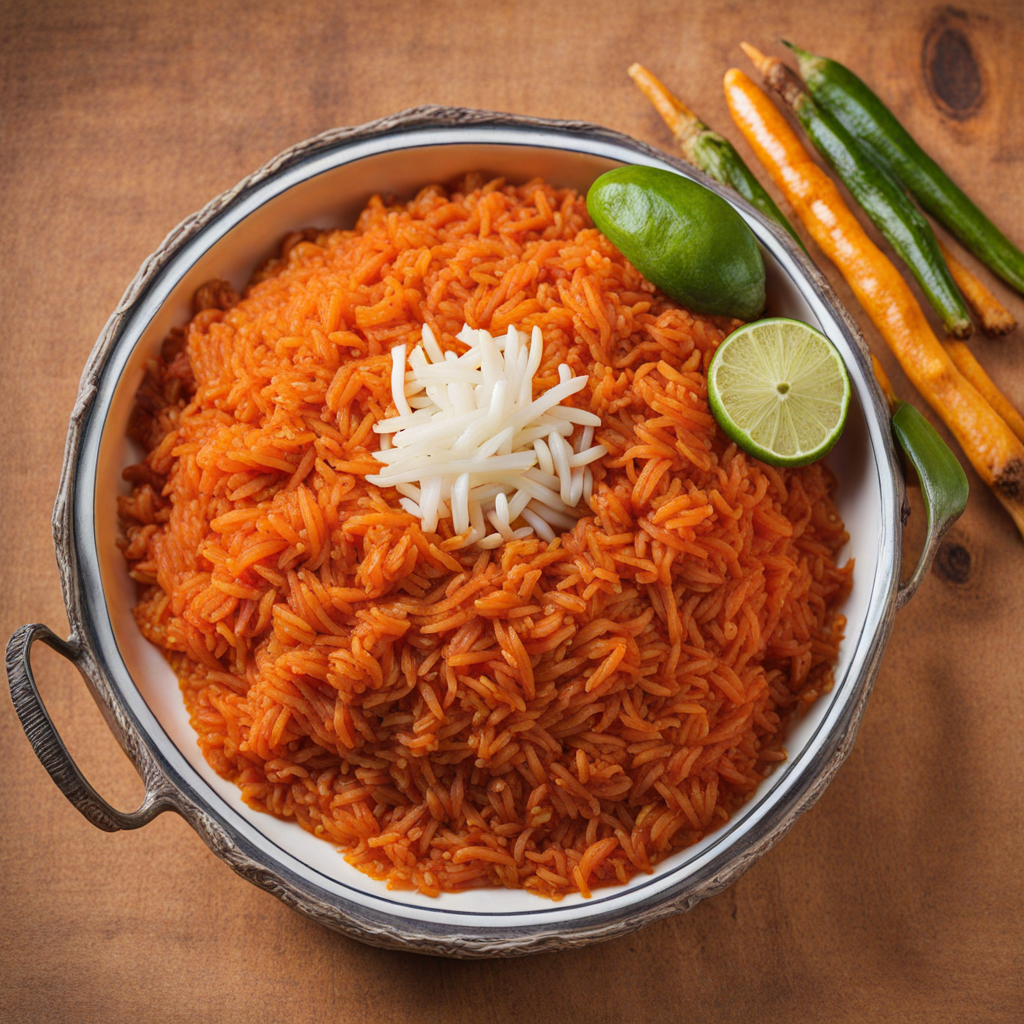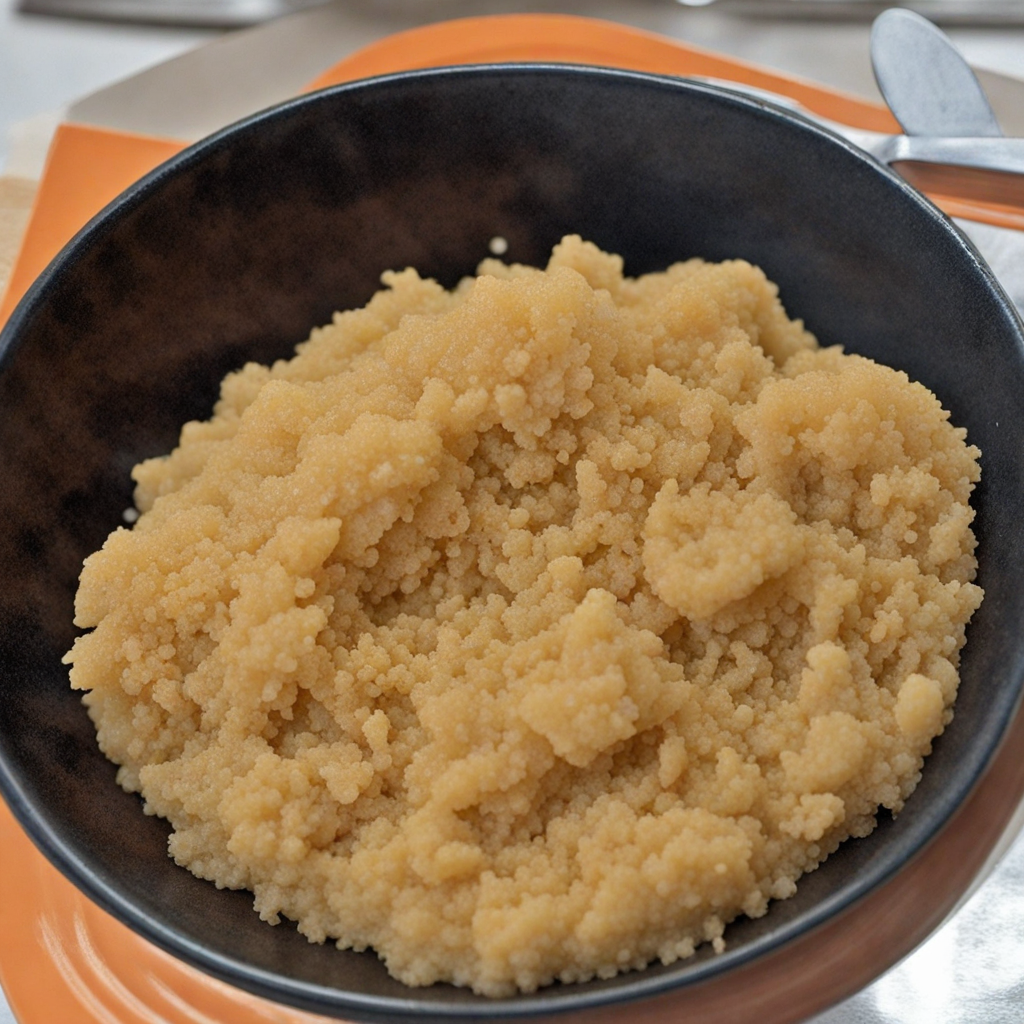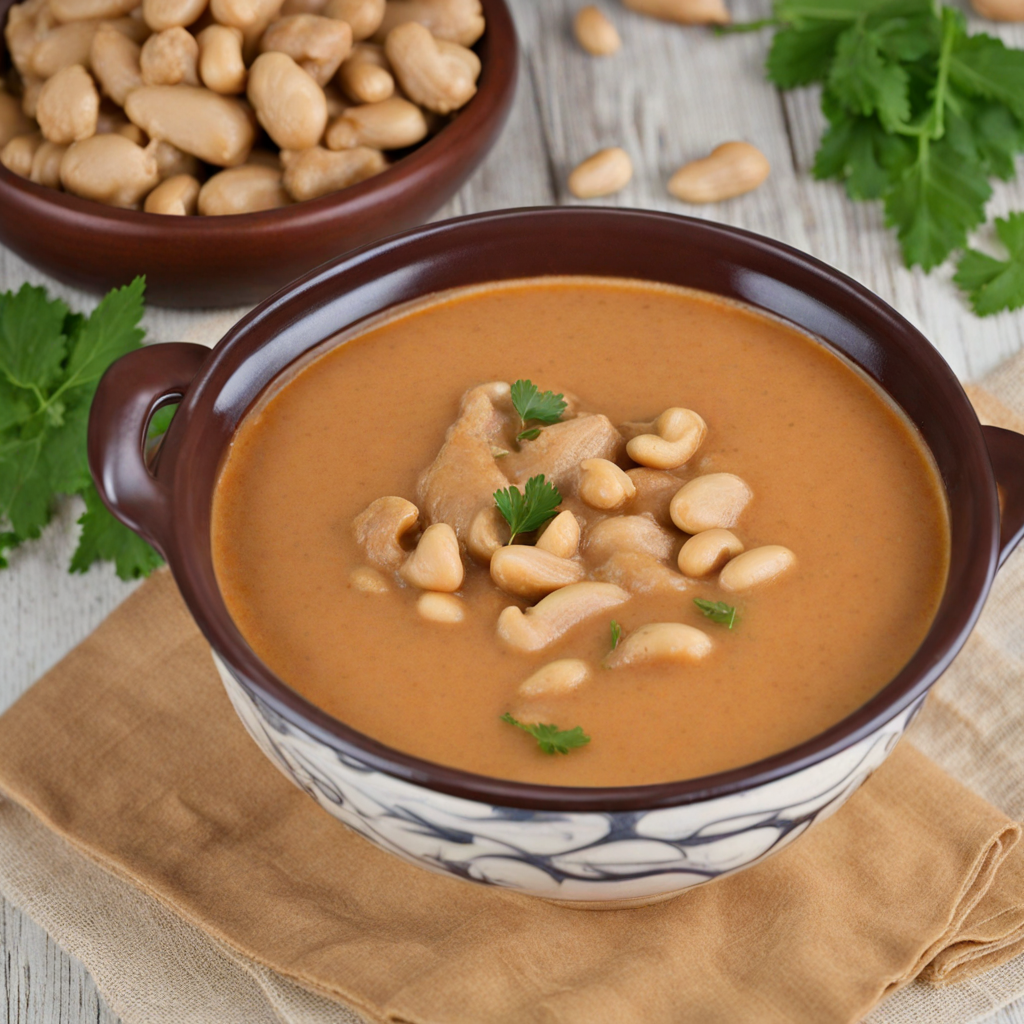Fouti
Fouti is a delightful dish that hails from Guinea, offering a unique blend of flavors and textures that are sure to tantalize the taste buds. At its core, Fouti typically consists of a vibrant combination of rice and fish, often featuring the local staple, tilapia. The fish is usually marinated with a medley of spices, including garlic, ginger, and a touch of chili, which infuses it with a rich, savory depth. The rice is cooked to fluffy perfection, often flavored with a hint of onion and served as the ideal base to soak up the aromatic flavors of the dish. One of the remarkable aspects of Fouti is its versatility, as it can be tailored to suit various preferences. Some variations include the addition of vegetables like carrots, bell peppers, and peas, providing a burst of color and nutrition. The dish is often accompanied by a tangy sauce made from tomatoes and spices that adds an extra layer of zest. This combination of ingredients not only pleases the palate but also creates a visually appealing presentation that invites diners to dig in. Fouti is not just a meal; it embodies the communal spirit of Guinean culture, often enjoyed during gatherings and celebrations. The experience of sharing this dish with others enhances the enjoyment, making each bite a celebration of flavors and textures. Whether you are savoring the tender fish, the fluffy rice, or the vibrant sauce, Fouti promises a culinary journey that transports you to the heart of Guinea, leaving you with a lasting impression of its rich and diverse food heritage.
How It Became This Dish
Fouti: A Culinary Jewel of Guinea Origins of Fouti Fouti, a traditional dish from Guinea, is a vibrant reflection of the country's rich culinary heritage and cultural diversity. The dish is primarily made from rice, often accompanied by a variety of meats, vegetables, and spices, making it a versatile and beloved staple in many households across Guinea. Its roots can be traced back to the various ethnic groups that inhabit Guinea, including the Mandinka, Fulani, and Soussou peoples, each contributing unique flavors and techniques to its preparation. The origin of Fouti lies in the agricultural practices of these communities, where rice cultivation has played a central role in their diets for centuries. Guinea's fertile soil and favorable climate conditions have made it one of West Africa’s leading rice producers. Hence, rice has become not just a staple food but a cultural symbol, representing sustenance, community, and tradition. Cultural Significance In Guinea, food is deeply intertwined with cultural identity and social practices. Fouti is often prepared for festive occasions, family gatherings, and communal celebrations. The act of cooking and sharing Fouti is a communal endeavor, emphasizing the importance of togetherness and hospitality in Guinean culture. It is common for families to gather around large bowls of Fouti, sharing stories and creating bonds over this delicious meal. Moreover, Fouti has significant cultural symbolism. In many Guinean communities, the preparation of Fouti can be seen as a rite of passage. Young women are often taught the intricacies of cooking Fouti, passing down traditional recipes and techniques from one generation to the next. This practice not only preserves the culinary heritage of Guinea but also reinforces family ties and cultural continuity. Development Over Time Over the years, Fouti has evolved, incorporating influences from various culinary traditions while remaining true to its roots. The dish has adapted to the availability of ingredients, local tastes, and modern cooking methods. Traditionally, Fouti was prepared using simple, locally sourced ingredients, but with globalization and increased access to diverse food products, new variations have emerged. In the past, Fouti was typically made with a base of plain rice, cooked in a pot over an open fire. The rice was often accompanied by a rich sauce made from tomatoes, onions, and local spices, and served alongside meat such as chicken, goat, or fish. The combination of flavors created a dish that was not only satisfying but also deeply nourishing. As urbanization has increased in Guinea, particularly in cities like Conakry, the popularity of Fouti has led to the emergence of street vendors and restaurants specializing in this dish. These establishments have introduced innovative twists to the traditional Fouti, incorporating modern culinary techniques and international flavors. For instance, some vendors may offer Fouti with grilled meats or seafood, while others use non-traditional ingredients like bell peppers or exotic spices from other regions. Despite these changes, the essence of Fouti remains intact. It continues to be a symbol of Guinean identity, a way to connect with heritage and community. Additionally, the dish has gained recognition beyond Guinea's borders, finding a place in African restaurants and culinary festivals around the world. This growing appreciation highlights the importance of preserving traditional foods while embracing culinary innovation. Ingredients and Preparation The preparation of Fouti can vary widely depending on regional preferences and personal tastes, yet some core elements remain consistent. The main ingredient is rice, which is typically parboiled and then steamed or cooked until fluffy. The accompanying sauce is a blend of tomatoes, onions, and local spices, often enhanced with ingredients like groundnut paste (peanut butter) or palm oil to deepen the flavor. Meat is an essential component of Fouti, and choices can range from chicken and beef to fish and even plant-based proteins for vegetarian versions. Vegetables such as carrots, eggplant, and green beans are also frequently added, offering both nutrition and color to the dish. The cooking process is often communal, with family members collaborating to prepare the meal. Traditionally, the rice is cooked separately from the sauce, and once both components are ready, they are combined, allowing the flavors to meld together harmoniously. This method not only enhances the taste but also preserves the distinct textures of the rice and the sauce. Contemporary Significance In contemporary Guinea, Fouti continues to be a dish that embodies resilience and adaptability. It serves as a canvas for creativity, with chefs and home cooks experimenting with new flavors and presentation styles while honoring traditional methods. Social media has played a pivotal role in this evolution, allowing culinary enthusiasts to share their unique takes on Fouti and connect with others who appreciate Guinean cuisine. Fouti has also become a symbol of the growing interest in African cuisine on the global stage. As more people seek authentic culinary experiences, dishes like Fouti are gaining recognition for their rich flavors and cultural significance. Food festivals, culinary workshops, and cultural exchanges have introduced Fouti to an international audience, fostering a greater appreciation for the diverse food traditions of Guinea and West Africa as a whole. Conclusion Fouti is more than just a meal; it is a living testament to the history, culture, and resilience of the Guinean people. Its evolution over time demonstrates the intricate relationship between food and identity, highlighting how traditional dishes can adapt while still preserving their core values. As Guinea navigates the complexities of modernization and globalization, Fouti remains a cherished symbol of home, community, and the enduring power of culinary heritage. In a world increasingly connected through food, Fouti stands as a delicious reminder of the stories that every dish carries, inviting us to explore the rich tapestry of flavors and traditions that define Guinea and its people. Through every bite of Fouti, one can taste the histories, struggles, and triumphs of a nation, making it a dish worthy of celebration, both locally and globally.
You may like
Discover local flavors from Guinea


